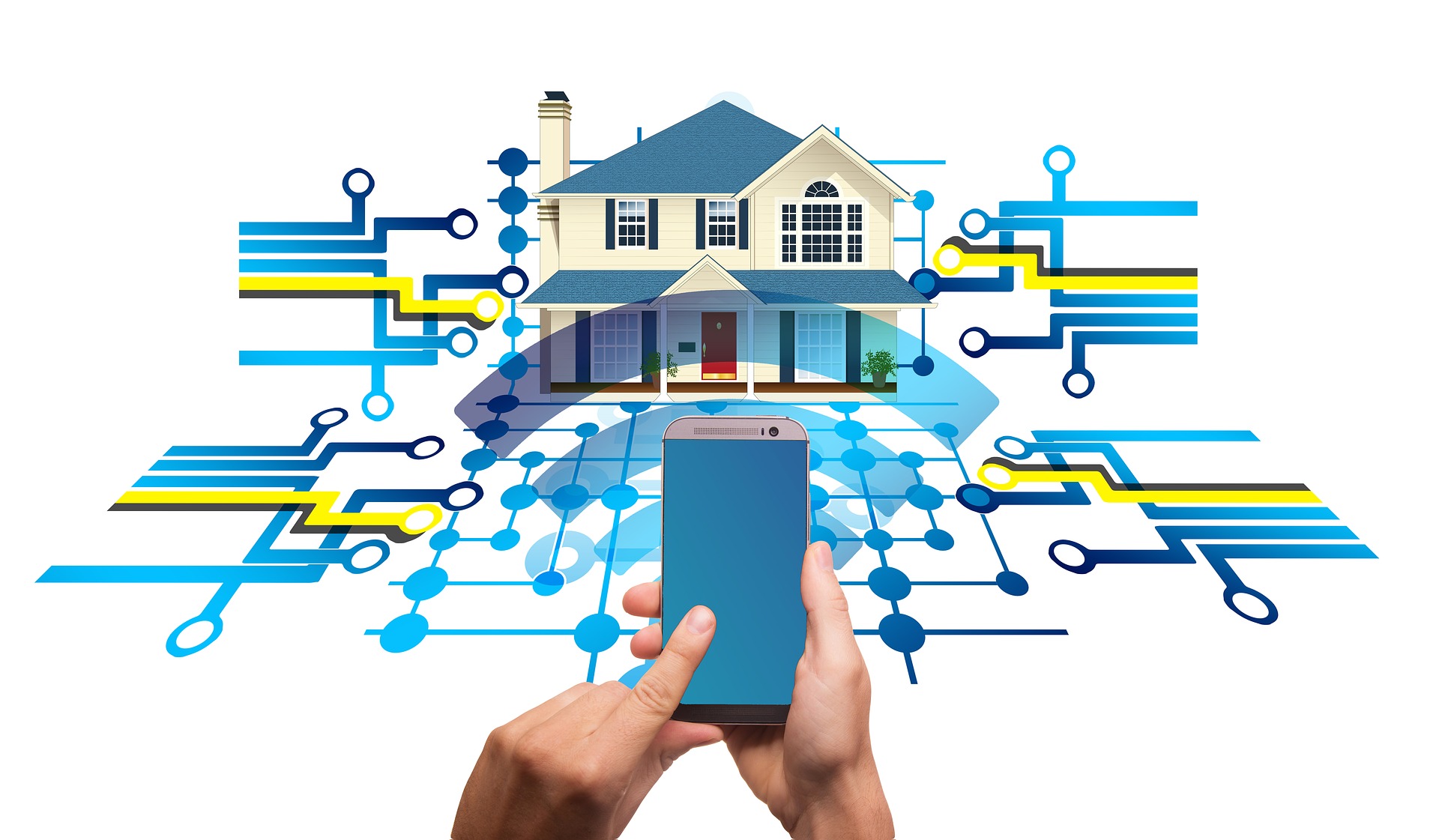Home security is a burgeoning marketplace – particularly in terms of smart systems. But just what is it that differentiates a smart system from the traditional burglar alarm, and why are users adopting and installing these types of system? The answer lies in greatly increased control for the end user. Internet connection means that your home’s security can always be available to be viewed or monitored in near real time. It also means that security functionality can be extended considerably through integration with other aspects of control in the home.


Architect standing in glass walled home office near window looking at smart phone
Numerous market research companies are predicting high growth in the smart home security sector. US-based ABI Research predicts that there will be more than 4 billion smart home sensors installed by 2022, which will “lay the foundation for the automated smart home experience” according to the company’s research director, Jonathan Collins. For its part, Ovum predicts that sales of security devices, such as cameras, door locks and sensors will help drive the market for smart home devices annually to an installed base of more than 1.4 billion units by 2021, up from 224 million in 2016. The report’s authors predict that, worldwide, “15.5% of households will have adopted smart home security technology by 2021”, while commenting that “only 6.2% will be paying for a professional smart home security service”.
Cellular support
Increasingly, home security systems are being supported by cellular networks. While take up is obviously dependent on the country in which the system is installed, depending on cellular infrastructure availability – the US and China have particularly buoyant marketplaces – cellular technology offers greater protection from network failure or tampering than does the standard phone network (public switched telephone network or PSTN).
In common with most modern communications-based systems, data represents an increasingly important constituent part of home security systems. Cellular technology is able to support video transmission from devices in the home. It also supports text-based alerts, more commonly known as short message service (SMS) alerts and other instant messaging applications that can be easily installed in common smartphones. The Mobile Intelligence report issued by Dynmark in 2015 said that research shows that “90% of text messages are read within 3 seconds of being received” and have “a final read rate of 98%”.
The majority of current security systems already rely on 2G and 3G cellular technology, both of which are widely available and offer reliable coverage. Increasingly, new systems are adopting Long Term Evolution-based 4G technology, more commonly referred to as LTE. LTE is a first-generation 4G technology that is being rolled out in different ‘flavours’ and at varying paces according to country. LTE Category 1 is already widely available at worldwide level and likely to form the backbone technology for smart home security systems, with its support for both voice and data.
Slightly longer term, LTE Category M1 offers a good basis for enhanced security system support. This low-power version of LTE caters for battery-backed Internet of Things (IoT) devices that connect directly to a 4G network and thus eliminate the need to connect to an external radio network gateway. Other IoT sensors and actuators with an even lower data rate are catered for by the Narrowband NB-IoT specification.
LTE Category M1 will also offer voice capability through VoLTE (Voice over LTE networks), enabling it to cater for applications such as security alarm panels, fire prevention and other safety systems that require a level of human interaction.
NB-IoT does not have Voice capability and it is therefore more suitable for remote control of smart IoT connected devices such as HVAC systems, smoke detectors, thermostats, smart lockers and other IoT sensors where voice interaction is not strictly necessary.
Protection mechanisms
The latest generations of cellular system offer enhanced protection for the security system end user, for instance through the encryption and authentication of network signals. The lack of these features in earlier systems laid them open to possible interception of signals sent from home security systems to an external gateway. Modern cellular systems preserve the integrity of data by providing encryption of all communications. Without the requisite codes, data remains inviolable. Further protection is provided by the use of authentication and identity verification technologies and digital signatures. Identification technologies include passwords and personal identification numbers (PINs) as well as biometric mechanisms such as fingerprint recognition and voice, iris or face scanning.
One disadvantage of radio-based technologies such as cellular is that they are potentially open to criminal strategies such as signal jamming. The most determined criminals are potentially able to identify the waveband being used and jam or block signals. Jamming detection mechanisms are available to avoid this problem.
Cyber security is continually in the press. It’s vital that software and firmware is always updated, to prevent malicious attacks by criminals who can otherwise exploit vulnerabilities in code. Alarm systems based on cellular modules made it possible to have these updates made over the air, so-called Firmware Over the Air (FOTA), saving on time spent sending out engineers to update systems and enabling changes to be made in a


Diego Grassi, Senior Manager Market
Development, u-blox
timelier manner.
By using cellular communication technology, surveillance systems are able to evolve resilience to newer cyber security attacks. Security Technology, like human beings, is able to exhibit natural evolution.







